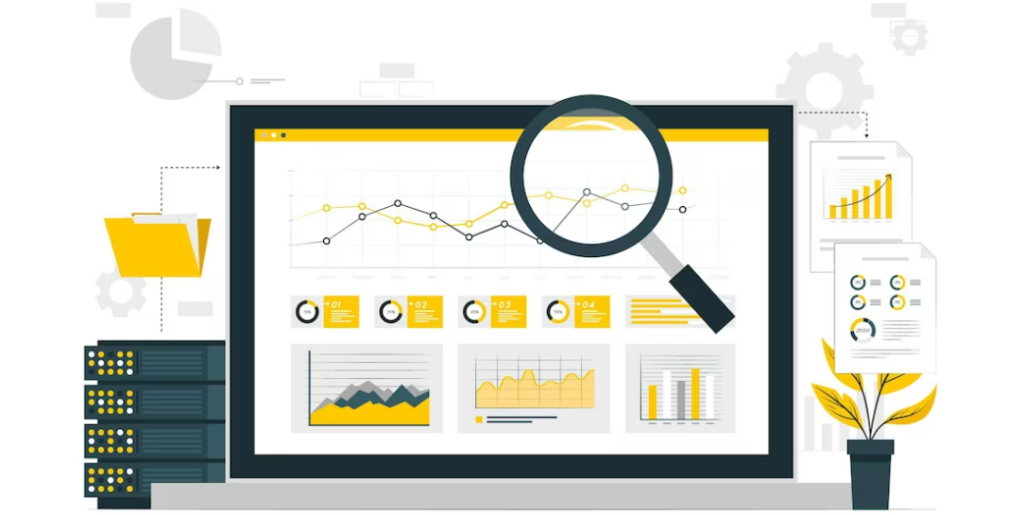In the dynamic world of online learning, data-driven decision-making has become a cornerstone for educational institutions and organizations. Tribyte Interactive Learning Platform have evolved to offer powerful analytics features that provide educators and administrators with a wealth of information to enhance the learning experience. In this article, we will cover the importance of analytics as a robust feature within the LMS. Furthermore, we will explore how analytics assists learning and development managers in uncovering fresh insights regarding user engagement with content and we will discuss how these revelations can be leveraged to improve decision-making, enhance performance metrics, and create a more profound influence on the overall business.


- User Usage Reports: Usage reports are a fundamental aspect of LMS analytics. They provide valuable insights into user engagement and activity. Key metrics include:
- DAU (Daily Active Users) and MAU (Monthly Active Users): These metrics reveal how frequently users interact with the LMS, indicating its ongoing relevance.
- User Trails: User trails offer a chronological view of a user’s interactions within the LMS, helping administrators understand their learning journey and areas of interest.
- Last Logged In: Tracking the last login time helps identify dormant accounts and encourage users to stay active.
- Not Accessed in X Days: This data highlights users who have not engaged with the LMS for a specific period, allowing educators to target interventions and re-engage learners.
- Course Progress Completion: Progress analyses provide a detailed overview of how learners are advancing through course materials. These insights enable instructors to:
- Identify bottlenecks: Discover where learners are getting stuck or disengaging.
- Optimize content: Modify course materials based on real-time feedback to improve learner comprehension and retention.
- Predict completion rates: Estimate when learners are likely to finish the course, helping with resource allocation and scheduling.
- Comprehensive Assessment Reports: A “One Stop Shop” for complete assessment reports in test preparation is a game-changer, offering personalized insights into student performance, progress tracking, and data-driven decision-making for educators and institutions.
- Tribyte platform provides detailed performance analytics, historical data, personalized recommendations, benchmarking, and a user-friendly interface.
- It transforms the test preparation experience, empowering students to fine-tune their study strategies, educators to optimize teaching, and institutions to deliver high-quality education, ultimately redefining the landscape of test preparation.
- Assignment Submission Summaries: Submission reports are pivotal for monitoring student progress and assessing the calibre of their work.
- Reports encompasses submission timelines, shedding light on procrastination patterns, quality evaluations of submissions, identifying areas for improvement, and fostering efficient communication between educators and learners.
- Classroom Session Attendance: Institutions that provide synchronous learning must place significant importance on monitoring classroom session attendance. LMS analytics can be instrumental
- In capturing attendance information, including the presence of attendees, those who are absent, latecomers, and users with approved leaves of absence.
- Live Class Attendance: Like classroom session attendance, live sessions attendance reports focus on real-time, online meetings, webinars, or live lectures. These reports can include:
- Attendance trends: Monitoring attendance patterns over time to identify the most engaging sessions.
- Evaluating user participation and attended duration.
- Recordings and replays: Tracking who accesses recorded sessions and their frequency.
- Feedback Surveys Reports: Survey reports provide an avenue for learners to express their opinions and concerns. LMS analytics can assist in:
- Survey response rates: Identifying the level of engagement and participation in feedback activities.
- Sentiment analysis: Analysing the tone and sentiment of responses to gauge learner satisfaction.
- Improvement insights: Using feedback to drive continuous improvements in course content, user engagement and delivery.
Conclusion: Analytics embedded in a Learning Management System represents an essential asset for educational institutions and organizations committed to improving the educational journey. These analytics offer valuable insights into user engagement, course advancement, assessment proficiency, assignment submissions, attendance records, and feedback responses, thereby equipping educators and administrators with the means to base their decisions on data. This data-driven approach benefits both learners and instructors alike. In the ever-evolving digital learning landscape, the importance of harnessing these robust analytics features cannot be overstated as they are pivotal for achieving success.


